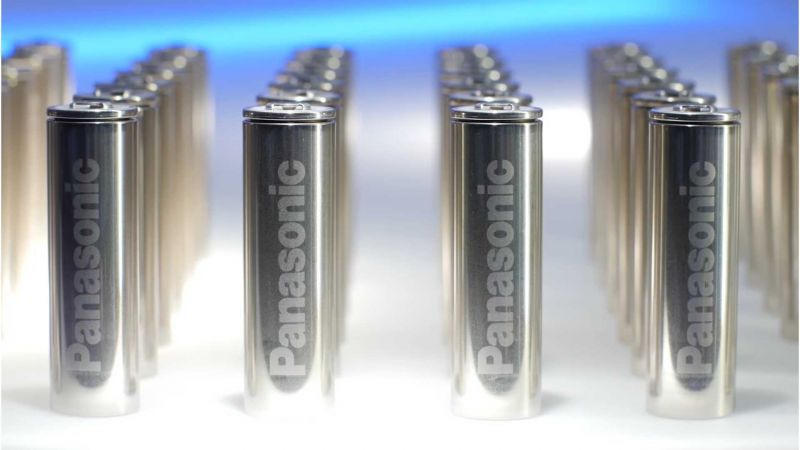Ford is Testing a New Robotic Charging Station to Assist Drivers of EVs With Disabilities
【Summary】For drivers with disabilities, switching to an electric vehicle may pose some new challenges, such as exiting the vehicle to plug in a bulky cable at an EV charging station. To address this, Ford Motor Co is testing a new robotic EV charging arm that will offer drivers with physical limitations a much needed helping hand.

For drivers with disabilities, switching to an electric vehicle may pose some new challenges, such as exiting the vehicle to plug in a bulky cable at an EV charging station. To address this, Ford Motor Co is testing a new robotic EV charging arm that will offer drivers with physical limitations a much needed helping hand.
Ford has developed a prototype "robot charging station" that drivers operate from a smartphone while sitting in their electric vehicle. The robotic charger offers two charging options, disabled or elderly drivers can stay in the car while charging, or they could simply leave the vehicle while the robot does the work for them.
The robot charging station was custom-made by Dortmund University, in Germany.
"I stopped filling up my car myself years ago, because it became very strenuous," said Angela Aben, Employee Communications, Ford of Europe, who uses a power-assisted wheelchair. "The introduction of a robot charging station would offer me a much greater level of independence."
Following initial lab testing, Ford is testing its robot charging station in real world situations as part of a research project to develop hands-free charging solutions for electric vehicles, as well as fully automatic charging for autonomous vehicles with no driver. Further applications could include automating the charging of company fleets.
A follow-up project with the charging network provider IONITY will explore ways to improve the robot charging station. Ford is also researching robot charging solutions in combination with Automated Valet Parking, which was demonstrated at IAA in Munich, Germany last year.
Ford says that disabled drivers have already identified ease of charging as a key concern for switching to an all electric vehicle, citing a recent survey in the UK that showed that 61% of disabled drivers would consider buying an electric vehicle only if charging was made more accessible.
"Ford is committed to ensuring freedom of movement and right now refueling or charging your vehicle can be a major problem for some drivers," said Birger Fricke, research engineer, Research and Innovation Center, Ford of Europe. "The robot charging station could be an added convenience for some people but – absolutely essential for others."
How it Works
Once activated, the charging station cover slides open and the charging arm extends towards the charging port of the vehicle. The robotic arm is guided into place by a tiny camera. For the early trials, drivers were able to monitor the charge status via the FordPass vehicle companion app. Once a charging session is complete, the robotic arm retracts back into place.
Ideally, the automated EV charging station could be installed at reserved disabled parking spaces, car parks or private homes. The technology could also support more powerful charging to charge vehicles in a much shorter time. It can also be used in inclimate weather or freezing temperatures, allowing the driver to stay warm and comfortable while their electric vehicle is being recharged.
In the future, the charging process could become fully automated, without driver involvement. The driver would simply direct an electric vehicle to a nearby charging station, then have its autonomously to a specific location once charging is complete.
Earlier this year Ford announced plans to boost global production capacity of high-volume electric vehicles, including the F-150 Lightning. The automaker aims to produce 600,000 electric vehicles a year by 2023 as its looks to catch up to segment leader Tesla.
By 2026, Ford says it will have sounced enough raw materials and battery production capacity to produce 2 millions EVs a year. Developing novel EV charging solutions like this may help to boost EV adoption.
-


Ford Raises the Prices of the F-150 Lightning Electric Pickup Due to Rising Raw Material Costs
-


The BMW 7-Series to Feature HD Live Maps From HERE Technologies for Hands-Free Highway Driving in North America at Speeds up to 80 MPH
-


AutoX to Use the 'Eyeonic Vision Sensor' from California-based SiLC Technologies for its Robotaxi Fleet in China
-


LG Develops ‘Invisible’ Speaker Sound Technology That Could Revolutionize In-Vehicle Audio
-


Researchers at South Korea’s Chung-Ang University Develop a ‘Meta-Reinforcement’ Machine Learning Algorithm for Traffic Lights to Improve Vehicle Throughput
-


Zeekr’s New 009 Electric Passenger Van is the World’s First EV to Feature CATL’s Advanced ‘Qilin’ Battery With a Range of 510 Miles
-


Redwood Materials is Building an Electric Vehicle Battery Recycling Facility in South Carolina
-


Panasonic Announces Multi-Year Agreement to Supply Electric Vehicle Batteries to Lucid Group
- EV Startup VinFast Simultaneously Opens Six Retail Stores in California as it Prepares to Enter the U.S. Market
- US-listed LiDAR Developers Velodyne and Ouster to Merge in an All-Stock Deal
- Mercedes-Benz Begins Production of the Highly Anticipated EQS Electric SUV in Alabama
- Toyota is Investing an Additional $2.5 Billion to Expand its North Carolina Factory to Boost EV Battery Production
- China’s New Intelligent EV company JIDU Launches its Limited-Edition Robocar Called the ‘ROBO-01 Lunar Edition’
- New Premium Electric Vehicle Brand Zeekr Is Exploring IPO Options in the U.S. or Hong Kong, According to Sources
- Ford Unveils the F-150 Lightning Special Service Vehicle, a Fully Electric Pickup for Police Departments
- General Motors is Building a Coast-to-Coast DC Fast EV Charging Network in the U.S. in a New Partnership with Travel Center Operator Pilot Company
- Ford Raises the Prices of the F-150 Lightning Electric Pickup Due to Rising Raw Material Costs
- Here’s How Waymo Uses Hyper-Local Weather Data to Improve the Capabilities of its Self-Driving Vehicles











 About Us
About Us Contact Us
Contact Us Careers
Careers